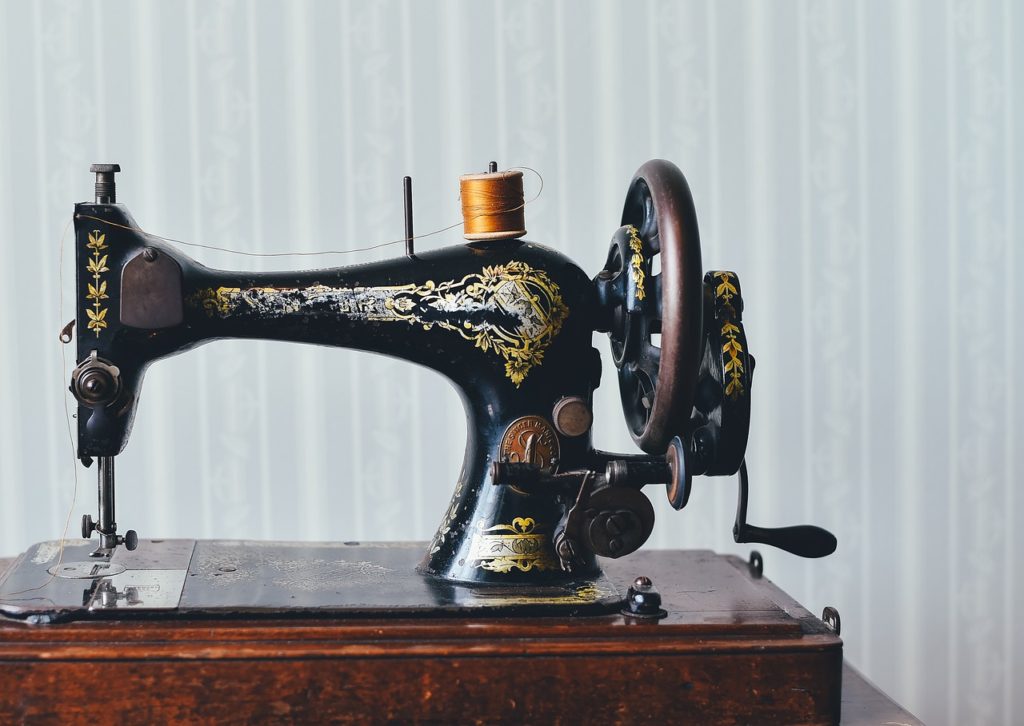For full disclosure, I receive commissions for purchases made through highlighted links in these posts.

Who first invented the sewing machine is a bit of a compilation. The sewing machine has a very winding path that, shall we say, keeps you in stitches. It’s origins start back during the Industrial Revolution and the 18th Century Europe.
It was 1755
When Charles Weisenthal, who was a german, was issued a British patent for “a needle that is designed for a machine.” There was no description of a mechanical device. Just the patent for the needle for a “machine”. This patent met a great need at the time.
Then in 1790
Thomas Saint, an English cabinet maker built a hand crank machine that was built in a cabinet. This was the first patent with a detailed design. The patent said it was to be used on leather and canvas.
Then in 1874
William Newton Wilson, an English engineer, found Thomas Saint’s detailed schematic and built a replica. This was to prove that Thomas Saint’s patent worked.
Then in 1830
Barthelemy Thimonnier, a french tailor, created a chain stitch with a hooked needle and one thread. Mr. Thimonnier, after the patent was approved, started a factory with his machines making french Army uniforms. The other french tailors at the time became extremely jealous and were afraid they would lose all their business. So they burned down the factory with Mr. Thimonnier inside. Mr Thimonnier barely survived.
We then come to 1834
In America an inventor by the name of Walter Hunt created the first functioning sewing machine. Mr. Hunt was concerned that his invention would put people out of work so he never got a patent on the machine.
Ten years later in 1844
John Fisher, an English inventor, designed a sewing machine where all the parts moved together. Before this time sewing machines were disjointed. But, an error is filing his patent resulted in the patent getting lost, therefore, Mr. Fisher never received recognition.
One year later in 1845
Elias Howe, an American inventor, invents a sewing machine with a lockstitch. Mr. Howe does this, by using two thread sources. The sewing machine had a needle with thread through the eye that went through the fabric. This created a loop on the underside of the fabric. Then a shuttle on a track slipped the second thread through the loop. Thus locking the stitch in the material.
Mr. Howe could not get his design marketed in the United States so he sailed to England. After Mr. Howe spent several years in England he came back to America and found that others had copied his lockstitch. One of the copiers was none other than Isacc Merritt Singer.
In 1851
Isaac Merritt Singer builds a legacy with his decorative Singer sewing machines. The first Singer machine had a foot pedal and a needle that went up and down. Mr. Singer was inspired by elements of Howe, Hunt, and Thimonnier’s inventions.
In 1854
Elias Howe sues Isaac Merritt Singer for Patent Infringements. Mr. Howe defended his case and won! Eventually, a lump sum payment of patent royalties and a share of I.M.Singer & Co. profits was awarded to Elias Howe from Mr. Singer.
Therefore, it is apparent that a lot of people were part of the process of inventing the sewing machine but ultimately Isaac Merritt Singer’s name is still on machines today. Elias Howe died a very wealthy man so he was compensated for his invention too.
1954
Now that makes about 100 years from Mr. Singer’s patent to when my grandmother gave my mother our first sewing machine. Lives certainly changed with the invention of the sewing machine and eventually for the better.
